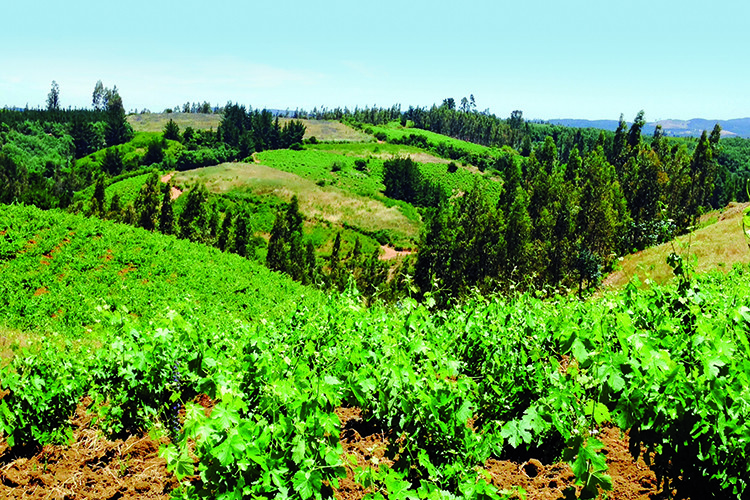The geographic and climatic condition of Chile is somewhat unique. The long and narrow landmass of Chile faces the Pacific, with the snow-capped Andes mountain at its back. Although rainfalls mostly occur in winter, the melted snow from the Andes serves as a reliable source of water. Therefore, most vineyards in Chile are planted on flat lands that are either close to a river, or sufficiently irrigated.

and adapt under Creative Commons BY-SA Alike 2.0 Generic license
The DO (denominacion de origen) system was established in 1994, defining the key wine regions, sub-regions, zones and areas in Chile. You might have noticed that almost all sub-regions have ‘Valley’ at the end of their names. This is because they are named after the rivers or valleys in the sub-region that flow down from the Andes to the Pacific. Some of the most important sub-regions are (from north to south):
Elqui Valley and Limari Valley
Both sub-regions are from the same Coquimbo region, which is historically famous for making Pisco and table wines. Both Elqui Valley and Limari Valley have good viticulture conditions as they are situated at high altitude, with dry climates and clear air. Sauvignon Blanc, Carmenere and Syrah are mostly planted in Elqui Valley, while the soil in Limari Valley is more suitable for planting Chardonnay.
Aconcagua Valley
This sub-region can be divided into two distinctive parts. The eastern half is one of the driest and hottest wine regions in Chile, producing good quality red wines. Chile’s first Syrah vines were also planted here. The cooler coastal half also displays potential to produce quality white wines.
Casablanca Valley
This is a comparatively new wine region, with vines first planted in the 1980s. Influenced by the cold fogs from the Pacific, it is one of the coolest wine regions in Chile, known for its outstanding Sauvignon Blanc, Chardonnay and Pinot Noir. But its proximity to the sea also brings threats of spring frost.
San Antonio Valley
This is another ‘new’ wine region is situated very close to the ocean. Again the cooling effect of the Pacific helps to produce refreshing Sauvignon Blanc, Riesling and some of Chile’s best Pinot Noir.
All rights reserved by Future plc. No part of this publication may be reproduced, distributed or transmitted in any form or by any means without the prior written permission of Decanter.
Only Official Media Partners (see About us) of DecanterChina.com may republish part of the content from the site without prior permission under strict Terms & Conditions. Contact china@decanter.com to learn about how to become an Official Media Partner of DecanterChina.com.




Comments
Submit